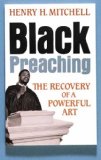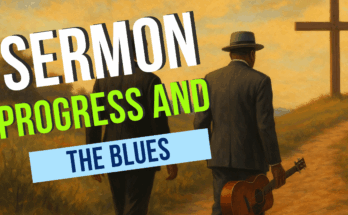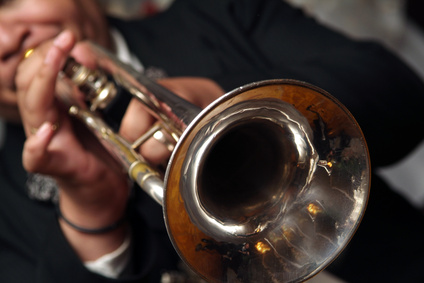As an Amazon Associate I earn from qualifying purchases.
Definition
Our Homiletic Terms bibliography defines Call and Response as “A back-and-forth verbal dialogue between preacher and congregation during the sermon.†Often this is assumed to be in the African American church with an African American preacher, but I have seen pentecostal European American pastors interacting with mixed congregations in this way.
Sub-Categories
 Definitely connected to this term is Whooping which is not in our homiletic terms bibliography. This is when the preacher’s voice takes on a musical quality in the preached event. This often intensifies the congregations response. Interestingly this is not solely a Black Preaching phenomenon in that there are white preachers that have something like this as Dr. Henry Mitchell notes in the book Black
Definitely connected to this term is Whooping which is not in our homiletic terms bibliography. This is when the preacher’s voice takes on a musical quality in the preached event. This often intensifies the congregations response. Interestingly this is not solely a Black Preaching phenomenon in that there are white preachers that have something like this as Dr. Henry Mitchell notes in the book Black
Preaching: The Recovery of a Lost Art. â€ÂÂWhite Separatist Baptists in the south developed their own preaching tone; they call it the ’holy whine.’â€ÂÂ(28) In addition, Celebration which is our next term is connected to Call and Response. While it is not exactly what is had in mind, one might see a hint of Collaborative Preaching in that the sermon does change as the people interact with the preacher in the event of the sermon.
Debates or Analytical perspectives
 Kirk Byron Jones notes in the book The Jazz of Preaching: How to Preach with Great Freedom and Joy that there are three positives of Call and Response as he compares it to the dialog that happens in the event of a the communal hearing of a Jazz piece of music. He notes that the dialog through Call and Response builds community. Jones also notes that it is a dialogue that helps the preacher because she or he can determine the â€ÂÂeffectiveness in communication. Finally, it helps the â€ÂÂlistener understand the message.â€ÂÂ(101)
Kirk Byron Jones notes in the book The Jazz of Preaching: How to Preach with Great Freedom and Joy that there are three positives of Call and Response as he compares it to the dialog that happens in the event of a the communal hearing of a Jazz piece of music. He notes that the dialog through Call and Response builds community. Jones also notes that it is a dialogue that helps the preacher because she or he can determine the â€ÂÂeffectiveness in communication. Finally, it helps the â€ÂÂlistener understand the message.â€ÂÂ(101)
 Evans Crawford agrees with this perspective in his book The Hum: Call and Response in African American Preaching. He believes that the responses of the community help the preacher determine if the sermon facilitates true and
Evans Crawford agrees with this perspective in his book The Hum: Call and Response in African American Preaching. He believes that the responses of the community help the preacher determine if the sermon facilitates true and
authentic worship from the â€ÂÂhuman heart whether that ascription of praise is spoken aloud or uttered through sighs that lie too deep for words.†(16) Crawford uses a metaphor of music where the preacher using timing, pause, and pace to bring wonder to the congregation.
Crawford has built an evaluation method for the sermon where the conversation quality is determined by the congregational response elicited by the sermon. There are stages in the sermon for example: Help ’em Lord!, Well?, That’s all right!, Amen!, and Glory Hallelujah! Each stage is a part of the expected life cycle of a sermon and it is totally gaged from the response of the people.
So here Call and Response helps the preacher understand if the preacher is being heard. Also there is the issue of building community. Here the preacher is preaching to the community and not one. In a sense the preacher is preaching to a communal consciousness.
Keys for Preachers and Questions
- How much in common is Call and Response and Collaborative Preaching?
- As noted, Call and Response gives the preacher immediate feedback to
how the sermon is going. However can this blunt prophetic witness as the
preacher seeks that congregational response? In other words how much
should we gage the effectiveness of the sermon on congregational response? - Could Call and Response include the signs of discomfort that the preacher
sees when the sermon message hits home? - One very valuable component of Call and Response is that it can at least
let the people know that they are being heard. It is sometimes humorous to see excitement come over preachers who are not used to such immediate
feedback as they bask in the glow of it.
Amazon and the Amazon logo are trademarks of Amazon.com, Inc, or its affiliates.





